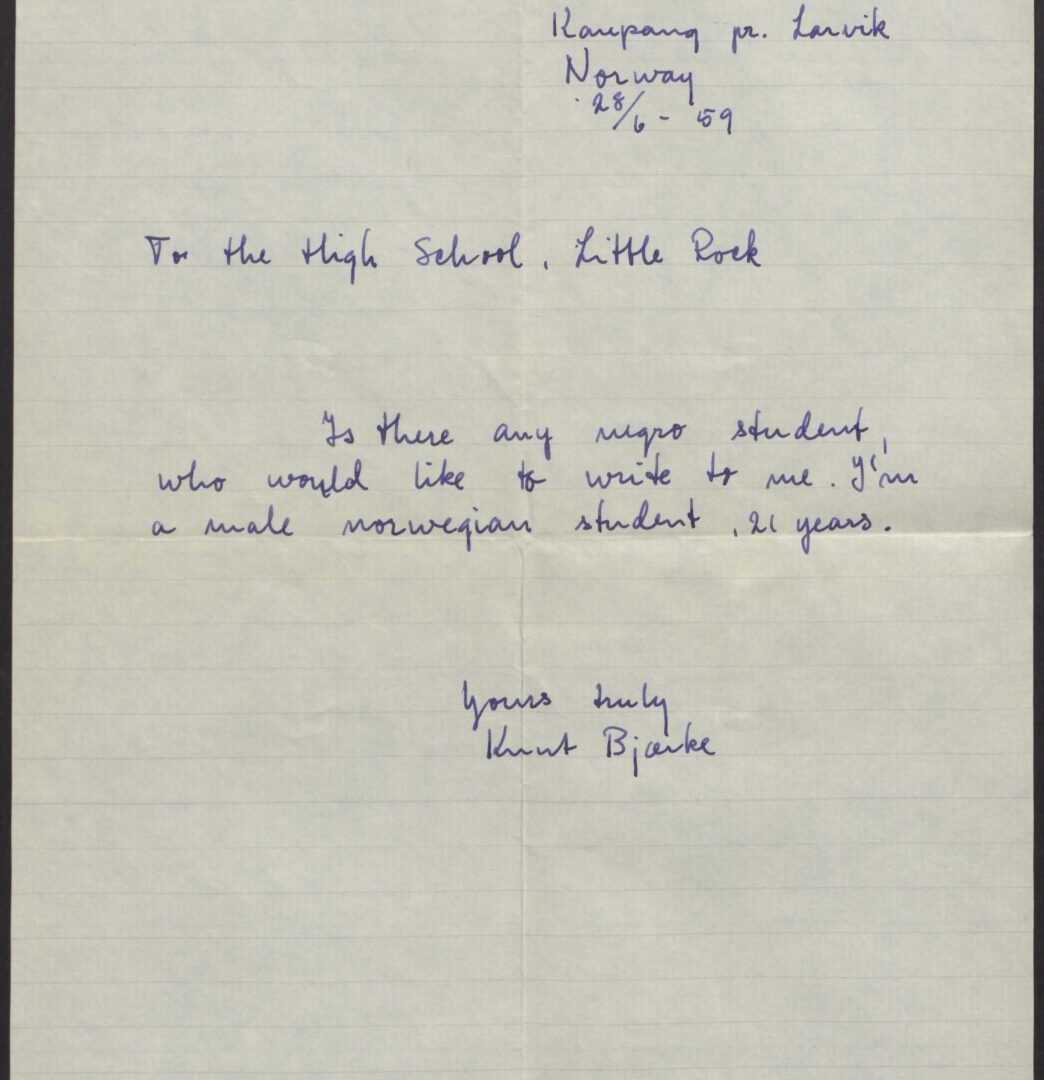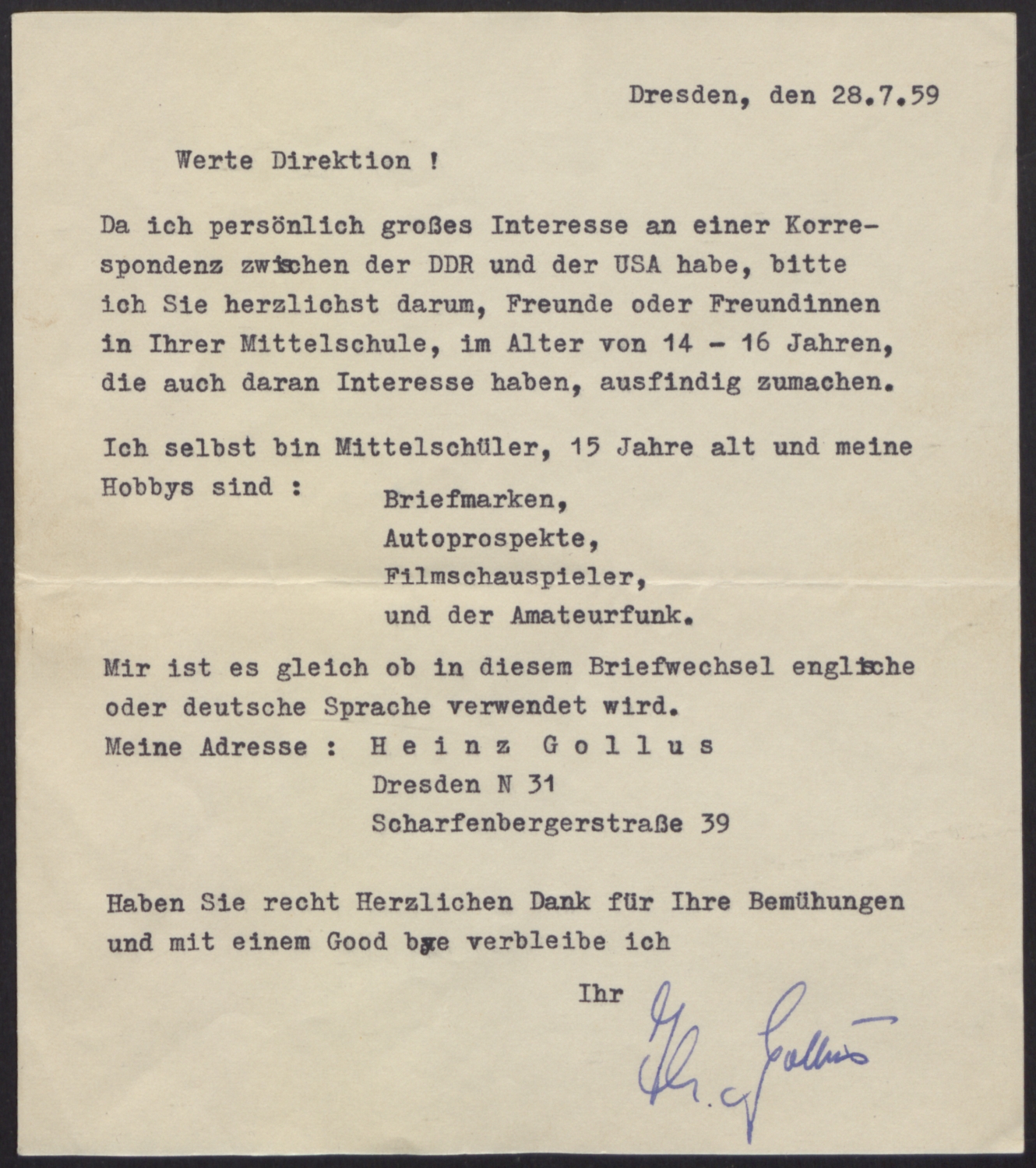Global Youth and the Little Rock Crisis
Introduction
In the fall of 1957, nine African American students attempted to enter Little Rock Central High School, but a white mob gathered around Central High to prevent them from entering the building. The nine African American teens – known as the Little Rock Nine – were the first non-white students able to enroll in Central High after the 1954 U.S. Supreme Court’s decision in Brown v. Board of Education declared segregation in schools to be unconstitutional.
Following Brown v. Board of Education, in 1955, the Little Rock school board accepted a plan of gradual integration presented by superintendent Virgil Blossom. According to the plan, Little Rock schools were to begin the integration process in the fall of 1957. However, when the nine African American students wanted to exercise their right to attend Central High, Orval Faubus, the Governor of Arkansas, sided with the advocates of segregation. He called the Arkansas National Guard to prevent the students from entering the school building. In response to this violation of federal laws, President Dwight Eisenhower federalized the Arkansas National Guard and ordered them to support the integration and protect the African American students.
These events, known also as the Little Rock Crisis, attracted the attention of the world. Newspapers and TV stations in places as distant from Little Rock as France, Ghana, or Australia reported how African American teens were being treated in Arkansas. People all over the world could see photos and TV footage of angry white men, women, and children assaulting not only the African American Central High students but anyone who sympathized with them. Among those who were watching the news were young people, sometimes of the same age as the Little Rock Nine. In this activity, you will examine three letters that Elizabeth Huckaby, who was vice-principal for girls at Central High School, received from young people from across the world in response to the Little Rock events.
Activity Questions
Elizabeth Huckaby correspondence, page 69
- Read three letters that Elizabeth Huckaby received in the aftermath of the Little Rock Crisis. [*see English translation of German letter]. Who wrote them, when, and where? Look at the images of the original letters (not transcripts). In what languages were the letters written?
- Look up a map of the world from the 1960s online. Locate the countries where the letters were written on the map. Then look up the current map of the world and try to locate the three countries. Note that one of them no longer exists. Do you know why?
- All three authors of the letters make the same request. What is it? Note that the request in the letter from Norway is more specific than in the two other letters.
- What kind of personal information about themselves do the authors of the letters share?
- Why do you think the young man from Ghana described his appearance? Note that he is the only one that did that.
- Huckaby received many more letters like these three and they came from many different countries. What does this tell us about news coverage all over the world at the time?
- Why do you think young people from different countries wanted to correspond with Central High students? What could they hope to learn from the Central High students?
- In the 1950s, calling someone in a different country was very expensive and most people in the world still did not have phones at home. Cell phones did not even exist. Writing letters was the most accessible and cheapest way to communicate. How has the Internet changed that?
- Would you want to become a pen pal with someone living in a different country today?
Primary Sources
To learn more about the primary sources featured in the activities above, click the following links:
Arkansas Social Studies Standards
US History Since 1890, Grades 9 – 12
- Strand: Era 9: Post-war United States 1945 to Early 1970s
- Content Standard 5: Students will analyze social, economic, and political changes in the United States between 1945 and 1970.
- Era9.6.USH.1 Analyze the roles of individuals, groups, and the government in securing civil rights during the mid-20th century using a variety of primary and secondary sources (e.g., minorities, women, NAACP, federal court cases, legislation, Twenty-fourth Amendment)
- Era9.6.USH.4 Examine domestic policies of the federal government between 1945 and 1970 and the outcomes from multiple perspectives (e.g., New Frontier, Great Society, civil rights, social issues)
- Era9.6.USH.5 Construct historical arguments of long-term effects of social and economic changes occurring during the mid-20th century using available data and multiple sources
African American History, Grades 9 – 12
- Strand: Illusion of Equality 1950-1970
- Content Standard 6: Students will analyze the African American experience from 1950-1970.
- IE.6.AAH.1 Analyze the various influences of African Americans on political change during the mid-1900s using primary and secondary sources (e.g., feminism, civil rights organizations, political organizations, and labor unions, military)
- IE.6.AAH.2 Examine the various influences of African Americans on social change using primary and secondary sources from multiple perspectives (e.g., migration, feminism, military, social organizations)
- IE.6.AAH.3 Examine various ways African Americans participated in the Civil Rights Movement and the effects of their actions using a variety of primary and secondary sources (e.g., sit-ins, boycotts, marches, speeches, music, methodologies, organizations)
- IE.6.AAH.4 Analyze the effects of legislative developments on the African American experience between 1950-1970 (e.g., voting, civil rights, fair housing, education, employment, affirmative action)
Arkansas History, Grades 7 – 8
- Strand: History
- Content Standard 7: Students will examine the impact of historical events and people on the development of Arkansas.
- H.7.AH.7-8.8 Analyze social, economic, and political effects of the Civil Rights Movement on various regions in Arkansas from multiple perspectives (e.g., integration, state legislation)
Arkansas History, Grades 9 -12
- Strand: Era 5: World War II Through the Civil Rights Era 1941-1967
- Content Standard 5: Students will analyze factors that influenced the perspectives of Arkansans from World War II through the Civil Rights Era.
- Era5.5.AH.9-12.4 Analyze the social, economic, and political effects of the Civil Rights Movement in various regions of Arkansas using primary and secondary sources from multiple perspectives (e.g., segregation; voting; integration of Fayetteville, Hoxie, and Little Rock School Districts; federal and state legislation)
Key Terms
Downloadable Guides and Handouts
We encourage K-12 educators to use History Alive: Virtually! in a way that will best match their classroom needs. The “Exercise” handout includes a complete exercise as featured on this website, the “Primary Sources” handout includes only primary sources used in the exercise, and the “Questions” handout includes analytical questions from the exercise but is editable and can be easily changed to best match students’ needs.
Global Youth and the Little Rock Crisis – Exercises


